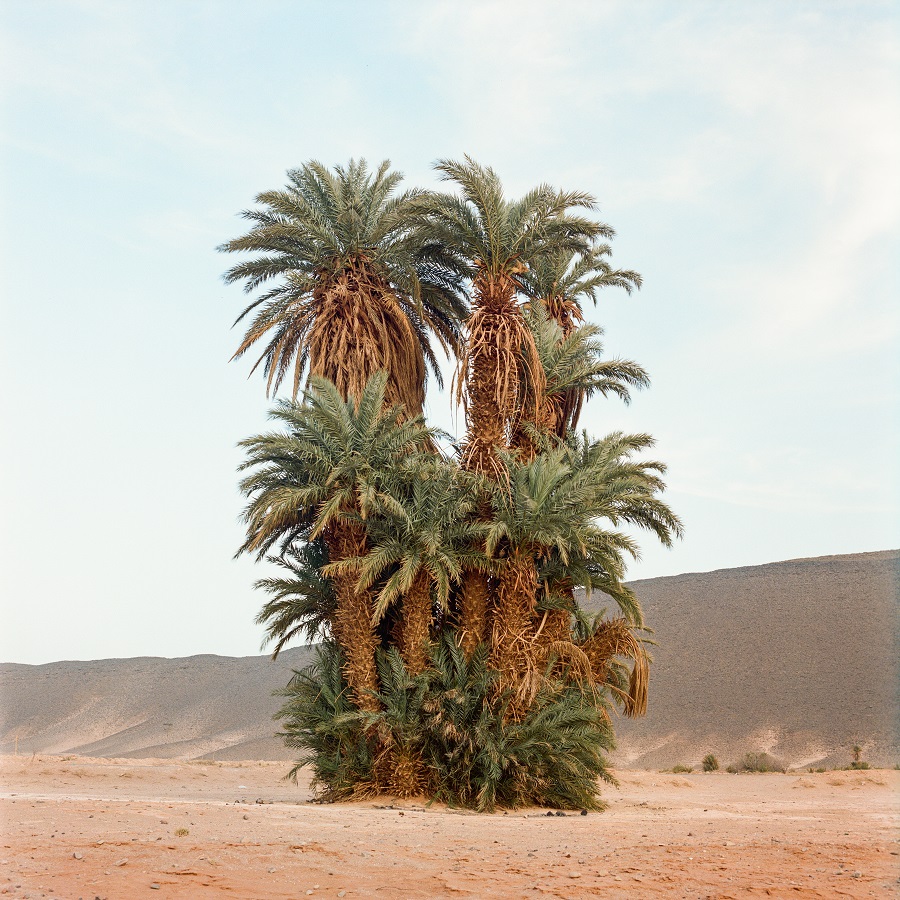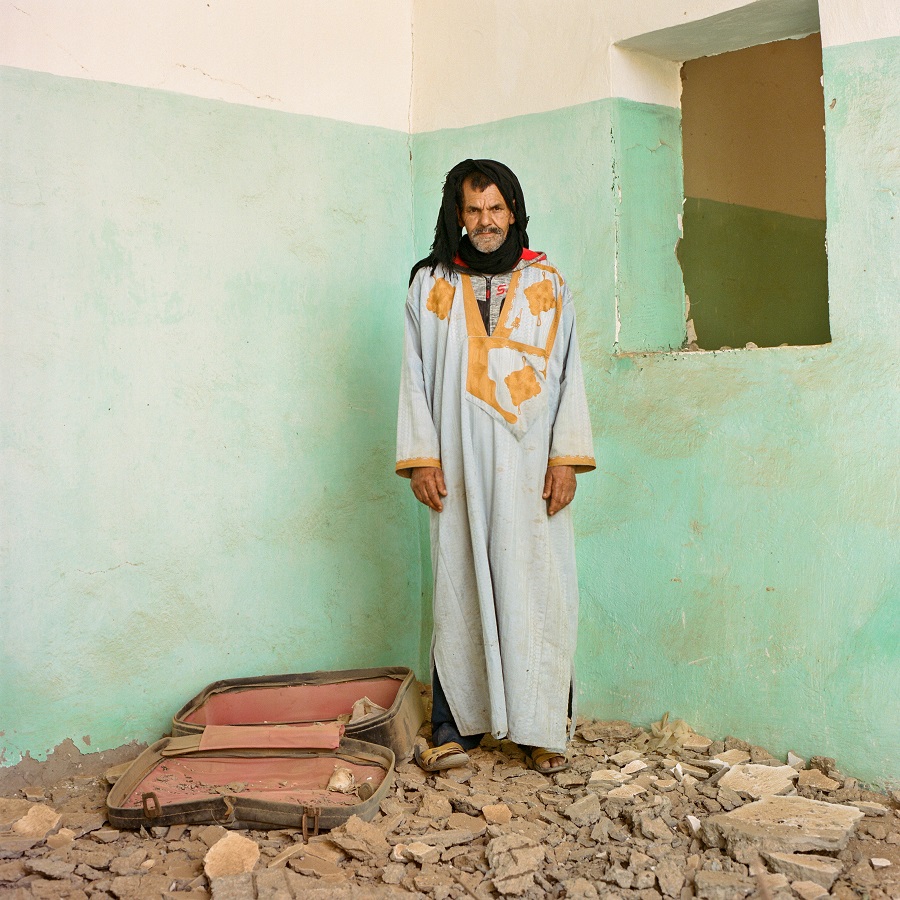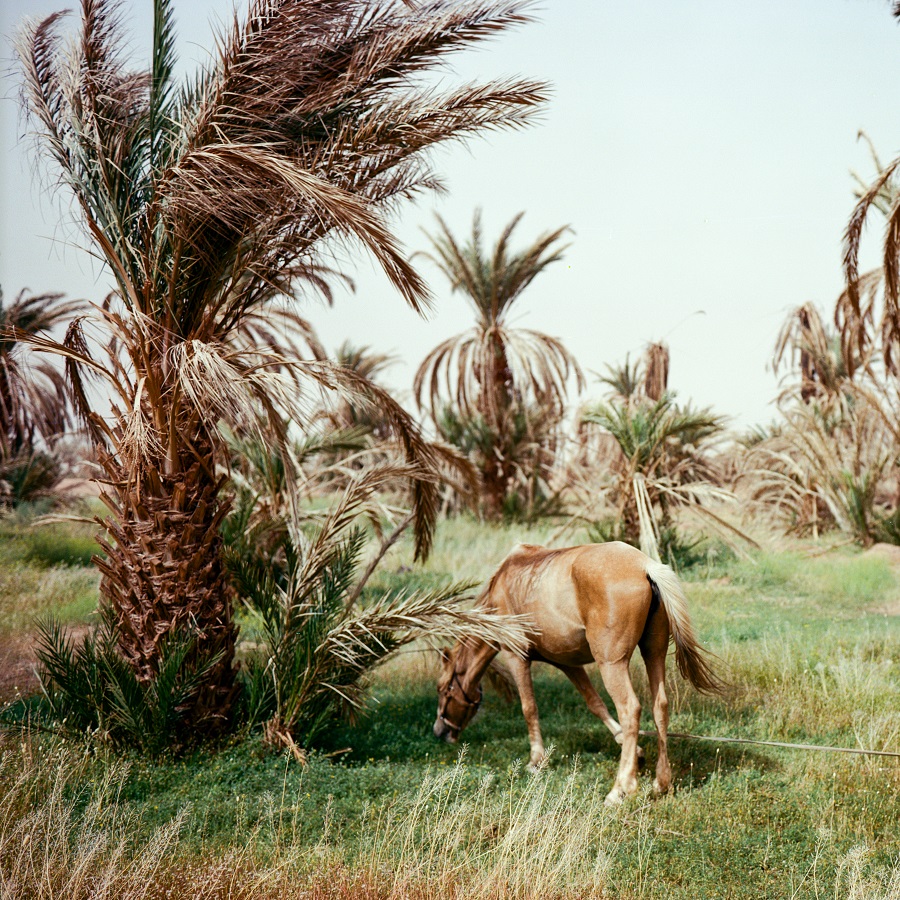DUBAI: Documentary photographer M’hammed Kilito has been shortlisted for the 42nd edition of the prestigious Leica Oskar Barnack Award.
Born in Lviv, Ukraine, Kilito grew up in Rabat, Morocco, where he is now based. In his work, he seeks to explore narratives pertinent to the understanding of cultural identity, climate change and the sociology of the workforce.
The 41-year-old photographer was shortlisted for “Before It’s Gone,” an ongoing multidisciplinary art project that highlights the degradation of oases in Morocco.

‘Before It’s Gone’ by M'hammed Kilito/VII Agency. (Gowen Contemporary)
“This is one of the most prestigious awards one can receive as a photographer,” Kilito told Arab News. “Just being a finalist is a real honor and a great privilege. Showcasing the project in an exhibition and in the Leica catalogue will allow it to reach a wider audience and raise awareness about the reality of oases and their inhabitants in the face of the effects of climate change,” he added.
Due to the impact of climate change and rising temperatures, the frequency of droughts has increased in Morocco, negatively impacting the country’s oases that are located in arid and semi-arid regions and considered an ecological defense against desertification as well as a crucial refuge for biodiversity.
“I realized that desertification, recurrent droughts and fires, changes in agricultural practices, overexploitation of natural resources, rural exodus and the sharp drop in the water table are all imminent threats to the existence of oases,” he said in his artist statement for the award. He decided to work on the project, he said, to “highlight these multiple concerns rarely covered by the media and largely unknown to the general public.”

‘Before It’s Gone’ by M'hammed Kilito/VII Agency. (Gowen Contemporary)
Through his powerful, haunting and evocative photographs, Kilito hopes to draw attention to the disappearance of oases due to climate change, alert public opinion, policy makers and concerned organizations. Additionally, he hopes to raise awareness on the need to protect the ancestral intangible heritage of the nomadic culture in Morocco that exists in these oases.
Kilito will present images from the project at an upcoming show at Gowen Contemporary in Geneva, Switzerland, and hopes to also produce a book from the series.
“At the same time, I am looking to explore in a comparative way the conditions of other countries that have oases,” he told Arab News. “The first opportunities I have are currently concentrated in the Gulf countries. In the coming months, I will go to Saudi Arabia and the United Arab Emirates to better understand the specificity and the organization of various oasis spaces and local communities. My research also aims to better understand different approaches, best practices, and programs applied to the valorization, conservation, and sustainable development of oases.”
The award is named after Oskar Barnack (1879–1936), the designer of the first Leica camera.

‘Before It’s Gone’ by M'hammed Kilito/VII Agency. (Gowen Contemporary)
The 12 shortlisted photographers include America’s Lynsey Addario, Indonesia’s Irene Barlian, Italy’s Alessandro Cinque, Germany’s DOCKS Collective, Germany’s Valentin Goppel, Canada’s Kiana Hayeri, Germany’s Nanna Heitmann, Belgium’s Léonard Pongo, Mexico’s Victoria Razo, Colombia’s Felipe Romero Beltrán, and Brazil’s Rafael Vilela.
Around 60 photography experts from 34 countries, including curators, gallery managers, art directors, picture editors and photographers submitted their entries for the LOBA 2022 main category.
These were then judged by a panel of five, including Alessia Glaviano, head of Global PhotoVogue and director of the Photo Vogue Festival in Italy; Natalia Jimenez-Stuard, photo editor at The Washington Post; Swiss photographer Dominic Nahr and recipient of the 2009 Leica Oskar Barnack Newcomer Award; Azu Nwagbogu, founder and director of African Artists’ Foundation and LagosPhoto Festival in Nigeria and Karin Rehn-Kaufmann, art director and chief representative of Leica Galleries International.
The winner of the LOBA receives $40,000 and Leica camera equipment valued at $10,000. Both the winning and shortlisted photographs will become part of a large touring exhibition, which will open in Wetzlar, Germany, in October 2022.












